 In today’s digital-first world, social media has transformed from a place to catch up with friends to a powerful tool for professionals - including authors. Whether you’re self-published, traditionally published, or somewhere in between, using social media for book marketing can significantly increase your visibility, build your author brand, and drive sales. But to succeed, you need more than just a presence - you need a plan. In this guide, we’ll break down how authors can effectively use social media to promote their books, connect with readers, and grow a lasting platform.  Why Social Media Matters for Authors Before diving into the "how," it’s important to understand the "why." Social media gives authors:
 Choosing the Right Platforms Not all social media platforms are created equal - each serves a different audience and content type. Here’s a quick breakdown: 1. Instagram
2. TikTok (BookTok)
3. Twitter (X)
4. Facebook
5. YouTube
 Creating Content That Resonates Content is the core of your social media marketing. But what should you post? The key is to diversify while staying authentic and consistent. Types of Content for Book Marketing
 Building a Community, Not Just an Audience One of the biggest mistakes authors make on social media is focusing solely on promotion. Social media is a two-way street. If you want followers to care about your book, you need to care about them first. How to Build Relationships
Timing & Consistency Matter You don’t need to post every day, but you do need a schedule. Create a content calendar to help plan posts in advance, especially in the months leading up to your book launch. Content Planning Tips:
Leveraging Paid Ads & Influencer Partnerships Once you’ve established your organic presence, consider investing in paid promotions to expand your reach. Facebook & Instagram Ads
Book Influencers & Reviewers
 Tracking What Works Use platform insights and link tracking to understand what content performs best. What to Track:
Use what you learn to refine your strategy over time. Final Thoughts Social media can be overwhelming, but when used strategically, it’s one of the most powerful tools available to authors today. Focus on building a connection with your audience, being consistent, and providing value - not just selling. Over time, you’ll not only grow your readership, but create a loyal fanbase that’s excited for everything you write. Remember: Readers don’t just buy books. They buy into authors. So be yourself. Be present. And most importantly, tell your story - on the page and beyond it If you have enjoyed this blog or found it informative, make sure you don’t miss future instalments by signing up to our newsletter. We’ll even send you a free ebook if you do.
0 Comments
We very rarely recommend products on this blog, so when we do you can be sure of two things. (1) We haven’t been paid to make the recommendation and (2) the product we are recommending has been of some tangible benefit to us.  This is the case with “Meta Ads Mastery for Authors”, a training course provided by Matthew J Holmes. To prove that it works, later in the blog we have posted a graphic showing the increase in Amazon sales we experienced over a 90 day period, for just one of the series of books we publish. Now for our upfront warning. This isn’t a “magic bullet”. It is not going to turn you into a bestselling author overnight. It will take time to learn the strategy and to refine it to make it work for your books. It will also involve some financial risk taking. Most importantly, it can’t turn a bad book into a bestseller (nothing can do that). BUT, if you stick with it, you will get results and those results are going to repay your investment.  Now, fair warning, for Indie authors adopting this strategy - it requires strong nerves. The financial outlay is far higher than we have had to make when we have tried out other marketing tools. It is also quite time consuming both in terms of working through the training materials and then trying out the lessons learnt. But as the old saying goes “You have to speculate to accumulate” and speculation, by its very nature, is risky and not for the faint hearted. However, we wouldn’t be recommending this product if the lessons it teaches didn’t work and here is the proof. We paid for the product on 2nd March 2024 and started to implement the early lessons on 4th March. The graphic below shows results for first 5 months of the year. The red arrow on the graphic shows where we started to use this new strategy (sorry we’ve redacted the actual royalties and sales data, but that is commercially sensitive information). In terms of orders, you can see a dip in month 2 of our experimental period. That is because the orders for month 1 were skewed by a 99p promotion that ran for 7 days. When the orders for that are discounted, the peak for month 1 is much lower, so the overall upward trend is more visible.. To assess whether our ad campaigns were successful or not we have used a calculation called “Return On Advertising Spend” (ROAS) which Matthew teaches in his course.  Essentially, this is the amount of royalties we received divided by the amount of money we spent on advertising, which gives us a number. If the number is greater than 1, our ads earned us more money than they cost. If they are less than 1, they cost us more than we made. We have included some of the cost of purchasing Matthew’s course in the ROAS calculation, as that is part of our costs. We decided to allow 12 months to recoup the cost, so we allotted 3 months’ worth of recovery to the ROAS calculation. Our ROAS for the 90 day period was 1.2 which means we made £1.20 in royalties for every £1 we spent on advertising. While that may not sound every exciting, when you scale that up to the hundreds or even thousands of pounds, the profit actually starts to look very impressive.  We also saw a considerable increase in KENP reads (KundleUnlimited (KU) downloads) during the same period, taking us from around 30% of total income to over 50% of the total. That means our ads reached a lot of KU subscribers. The book we were advertising is Book 1 of a series. We saw an up-tick in the numbers of sales we were getting for Books 2 to 9 during our 90 day experimental period, but some downstream sales won’t appear for several weeks yet, so we have to take them into consideration, but we haven’t factored them into our ROAS calculation because we don’t want to count our chickens before they are hatched.  An unexpected bonus during this period was for increased sales of the audiobooks for the series, of which there are 3 so far. During the 3 month testing period, sales surged to exceed the total for the financial year 22/23 and 23/24/ They now make up 40% of the lifetime total for the 3 books. While the sales link took the Facebook users to Amazon, it appears that listeners to audiobooks saw the ads and went looking for the audiobooks on their preferred sites. But there is no doubt that there is a large financial risk to using this strategy and that risk may not be acceptable for some authors, even though we are able to demonstrate through our own experience that the risk is reasonably low. Which is fair enough. It’s your money so it is you that is taking the risk. But we took the risk so you didn’t have to (you’re welcome).. Matthew does explain that you can spend less each day on your advertising, but that means it will take longer to achieve meaningful results. At the end of the day, it is up to you how much risk you are prepared to take in order to benefit from the sort of rewards that we have shown in our graphic. If that hasn’t convinced you that the product is worth the investment, then nothing will, so thank you for reading this far and we’ll see you next week for our next blog. For those that are still making up their minds, please read on for the rest of the product review.  What the course teaches you. The first thing you are taught is that an ad can’t sell your book. Your book has to sell your book. In other words, a Facebook Ad may get a click that takes a reader to Amazon (or wherever you sell your books), but if all isn’t right with your product page then the click won’t convert to a sale. Matthew recommends running your trial ads on a book that is already selling, so that you can be reasonably confident that your product page is OK, thus removing any confusing “noise” (my word). So, if your book isn’t currently making any sales, despite all your marketing efforts, look at the cover, the blurb, the free sample and the reviews. The barrier to sales is probably one of those 4 things (or maybe all 4). Fix that before you do anything else.  Whether you are new to Facebook Ads or not, the course aims to teach you a new strategy for using the platform for advertising, some of which may go against what you have been taught in the past. It provides tools and techniques both to improve your audience targeting, so you get more bangs for your advertising buck and also identifies better ways of creating ads so that they are more appealing to Facebook’s users. It also takes you into parts of the Meta platform that you may not have entered before, so there is a lot to be learnt.  One of the expressions Matthew uses is “stop the scroll” (which we blogged about in April). In other words, create ads that stop people from scrolling past them, which is the first battle to win for any advertising campaign on any platform. If your “creative” (the combined image, headline and text) doesn’t stop people scrolling, you won’t sell any books. Matthew recommends you run your trials over a 90 day period. This allows you enough time to create a variety of different ads to learn from them, to find out which techniques work best for your book(s), what sort of images work best, what sort of text etc. And those things will vary from genre to genre (its why we are only writing this review now, when we bought the product in March). That doesn’t mean you have to wait 90 days to see any results (as we have shown), only that you will start to get the best results after you have been learning for around 90 days. From experience, however, we suggest that by the time you get to the end of the first 30 days you will be earning enough to finance your experimentation during days 31 to 90.  One of the things the course focuses on is relating your ad “creative” to your sales so that you can learn from your ad’s performance. Facebook is very good at spending your money. They will show your ad to as many people as possible in order to get as many clicks as they can so they can spend your budget. However, not every ad you post is going to perform equally in terms of clicks. Some ads will get you more clicks than others and it is important that you know which are working hardest for you. You will want to “scale” a good performing ad (ie spend more money on it) so it sells you even more books and you will want to turn off poor performing ads so you don’t waste money on them. All of that is discussed during the course. In addition, you will want to identify the type of creative that is getting you the best results so that you can create similar ads and try them out. Image A may look good to you, but image B may get you more clicks because the people who see it like it better. The same applies to text and headlines. Finding out this sort of thing is gold dust in advertising terms.  The course talks a lot about how you analyse your data so that you can both scale the ads that work and to identify the sorts of creative that works best for your genre. Different genres attract different readers who are attracted by different creative styles. For some people this will seem scary. For some people, data is something that someone else analyses and the thought of analysing their own data may scare the pants off them. However, listen to what is being said, because there are valuable lessons to be learnt. You may not have either the time nor the inclination to try everything that is taught, but the more you try, the more you learn about your ads and the better you can become at creating and running them. While the course may generate sales wherever you sell your book, it works best with Amazon. That is because using something called “Amazon Attribution” (taught as part of the course) you can track sales generated from your FB ads directly. That means you get the clearest indication of which ads are working and which aren’t. That isn’t possible for other publishing platforms or from your personal website. You can track how many clicks you get that take people to other platforms, but you can’t track how many of those clicks are converted to sales. While you may get sales, you won’t know if they are ”organic” or if they have originated with FB ads. That isn’t a problem with the course, it is a problem with the way sales can be tracked on those other platforms.  As we have said, the strategy works, which is why we have given it a very rare (for us) 5 star rating. Investing the time to learn it is going to benefit your book sales and it really does deliver improved sales. If it didn’t, I wouldn’t have expended so many words on telling you about the product. Overall, we here at Selfishgenie Publishing are pleased to recommend “Meta Ads Mastery for Authors” and you can find out more about the product here. If you have enjoyed this blog, or found it informative, then make sure you don’t miss future editions. Just click on the button below to sign up for our newsletter. We’ll even send you a free ebook for doing so. 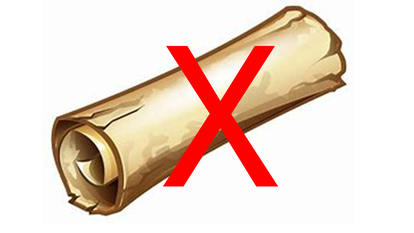 All Indie authors know how important their book cover is when it comes to selling their book (if you didn’t, you do now). But images in general are vital when it comes to promoting books. It’s no good having a great cover if you can’t get people to go and look at the book’s product page. Many authors use social media to direct people to product pages, but over recent years the effectiveness of this approach has declined. And there is a very good reason for that. The key words I want you to remember from this blog are “Stop The Scroll”. Did you know that the average social media user scrolls the equivalent to the height of the Eiffel Tower on their social media every day? 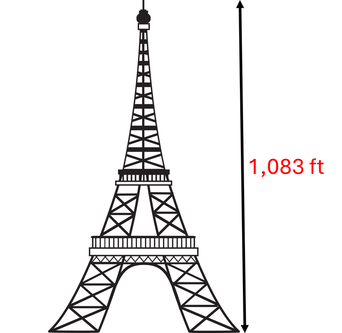 Just to put that in context, that’s the equivalent to 1,083 ft give or take the odd inch (330 metres to the tip of the radio mast). That is a lot of scrolling. Social media users are continually scrolling, scrolling and scrolling as they search for the next thing to catch their attention. Even when they stop scrolling they often don’t pay attention to a post for more than a few seconds. The average attention span for a post on social media is only 1.5 seconds according to research carried out by Linkedin. When it comes to selling books, social media is what is called a “secondary source”. That means people don’t go onto it specifically to find books, the way they would on Amazon or one of the other book selling websites. They go on social media for different reasons. Which means that the challenge for the Indie author is even greater. 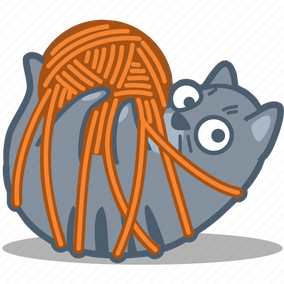 The challenge is to stop the social media user from scrolling past their post for long enough to read the content and take an interest in the book, even though they aren’t looking for books to buy.. And it is a considerable challenge. They are in competition with cute kittens, people falling into rivers hilariously and pouting celebrities with big bottoms, for goodness sake. Which means the imagery used in promotional posts has to be equally eye catching, if not more so. It literally has to make people say “Wow, I wonder what that’s all about?”. So they have to stop scrolling for long enough to find out. Did you know, you don’t actually have to put your book cover in your promotional imagery? In fact, it might even be counterproductive to do so. 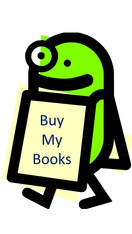 When people see a book cover in a post, they automatically think “Oh, just another author promoting their book” and they scroll past – even if they might actually enjoy reading the book. Because they’ve only looked at it for a fraction of a second they have no idea if it’s even in a genre they like to read. But if they see an intriguing image that doesn’t feature a book cover, they may stop scrolling for just long enough to start reading the text that goes with it. And once they start reading the text they might just find out about a book they might be interested in. For example:  If they see an image featuring a book cover with a dragon on it, they might think “Oh, just another fantasy author promoting their fantasy book” and scroll past because they’ve got a shelf full of fantasy books already. But if they see an image of a dragon without a book cover, they might say “Oh, a dragon. I like dragons. I wonder why someone has posted an image of a dragon?” Do you see how the psychology of that works? Instead of saying “Here’s my fantasy book, please buy it.” the author is saying “Look here, I’ve got something interesting to say about dragons.” 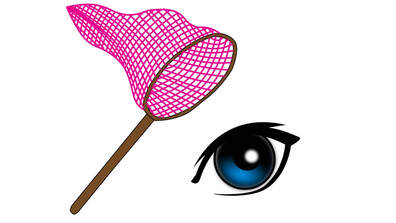 As a social media user, which approach would stop you from scrolling past? Now, I’m not saying it will turn zero sales into millions of sales by itself. But if it gets you a few more clicks to the sales page of the book, then the sales page may do the rest of the work for you. But if someone scrolls past your post because they think they don’t need another book, you get nothing. So, what sorts of images will stop the scroll? Two things mainly. One, they will be eye catching, making the viewer want to ask questions about them. Two, they will relate directly to the genre of the book. 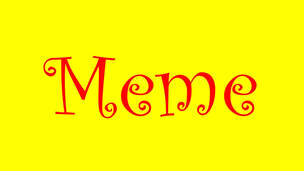 People are always looking for memes they can share, so putting some text with an image can also stop them from scrolling because they think the post may be a meme. Not the book title, but something related to the book. An extract from a review works well, especially if accompanied by a star rating*. Make sure you say “Reader Review” or “Amazon Review” etc. Other short text, eg “Jaw dropping adventure” also works. Making different versions of the image and posting them on different days will attract the attention of different potential readers, so don’t be scared to try out different ideas. If you use the site’s metrics you’ll soon learn what works for your genre from the way people react to the posts.  Try using variations of your images. Try using variations of your images. You can actually use elements from the book cover if they can stand by themselves, or you can create a scene that incorporates the cover image (minus the title, author name etc). Photoshop, Canva, Bookbrush et al have tools to help you create interesting images. Just because you normally turn them into a book cover doesn’t mean you can’t also use them as a picture by themselves.  This is one area where I have no qualms about suggesting that you use AI. It is the ideal tool to allow you to create genre specific images that result in professional quality pictures. I’ve played around with it and the image alongside this was created using AI. Would you scroll past that? . Well, to answer our own question, we posted two versions of it on a social media page. Version 1 included a book cover and version 2 didn’t. Both versions were accompanied by the same text, which was taken from the blurb for the book, plus a link to click on. Version 2 got almost double the number of link clicks compared to version 1. So, dear reader, what are you going to do to “Stop The Scroll” past your book promotions? * Please don’t make up review extracts or fake star ratings. Readers may check them out and if they do they may make adverse comments on the original post, which will undo all your good work. I know you would never do that, but I thought I’d better say it anyway. If you have enjoyed this blog, or found it informative, then make sure you don’t miss future editions. Just click on the button below to sign up for our newsletter. We’ll even send you a free ebook for doing so. 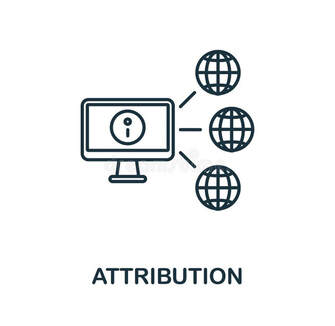 One of the problems that Indie authors have is trying to work out whether their social media marketing strategy is working for them. How does the author know if a sale has resulted from a random search on Amazon, what we call “organic traffic”, or if it has come from someone clicking on a link in a social media post or even from an advert posted somewhere like Google Ads?. This information is important for Indie authors. They spend a lot of time on social media, finding followers, building relationships, creating posts etc. They need to know if they are wasting their time, or if they need to invest more time on Platform A and less on Platform B.  The inbuilt metrics may tell them how many link clicks they are getting, but they won’t tell them how many of those clicks are being converted into sales and that conversion tells an important story. Some Indies go as far as paying for advertising on social media, or on sites such as Google Ads or on book promotions sites. How do they know if those adverts are actually resulting in sales? They may know how many clicks they are getting, but are those clicks earning them money – or just costing them money? This is vital information, because if clicks aren’t converting to sales, it means that there is something wrong with the sales page. It may be the cover image, it may be the blurb, it may be the free sample, or it may be the reviews – or lack of reviews. (BTW – this blog won’t help with diagnosing problems that are on the sales page. That is a whole different blog. Probably several blogs.) The KDP reports tell you how many sales or page reads you have had, but they don’t tell you where they came from. Connecting the different bits of information together to give you the whole picture isn't possible. So, wouldn’t it be wonderful if there was a way of tracking sales back to the place where the reader found out about your book? 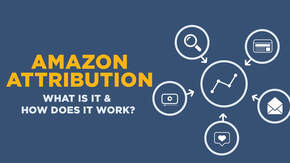 Well, there is. It’s called “Amazon attribution.” It’s FREE and it’s provided by Amazon itself, through Amazon Ads. Basically, what you do is create a unique link which allows Amazon to track the click back to its source. So, if the link is posted into Facebook and someone clicks on it there, then buys the book, the sale will be attributed to the Facebook post. Not only will this help you to identify where your sales originated, it will also tell you where you are getting your best results.  Did your best sales come from a Google Ad? Or did they come from a Facebook post? If it’s from a Facebook post then you might be better off not advertising on Google, but advertising on Facebook instead. Or on X, or Instagram or wherever you are getting your best results. This may also save you money, because you can now compare different platforms directly from which ones are selling your books. If you advertise on Amazon you will know if you get sales because the Amazon Ads data will show you. But what about Google Ads? From their metrics you will know if you got clicks, but you won’t know if those clicks turned into sales. With “Amazon attribution” that doubt is removed. Now, if you use a lot of sites for your marketing you will have to create a lot of attribution links. There is no point in using the same link on several sites because that doesn’t tell you which site is working best for you. You will need one link for Facebook, one for X, one for Instagram, one for Google etc. You can even use attribution links on your own website if you have one, to track sales that originate there, or to email shots and newsletters.  If you are running ads targeted at one particular country, say the USA, then you will need to make your link unique to Amazon.com sales. If you are targeting the UK as well, you will need a link for Amazon.co.uk. Etc. If you are selling on both, but you don’t know where your best sales are coming from, you may want to track sales in the two countries individually. So, you may have one link for Facebook post trying to get sales in the USA and a different link for Facebook posts aimed at the UK, even though you are using identical images and text to try to reach both countries. This could mean you creating a dozen or more links – but the information each link gives you will save you a lot of time and possibly a lot of money in the future as you will be able to make better decisions about your marketing strategy. Just to set your mind at rest, if you already have an Amazon Ads account then creating a link takes about a minute. If you haven’t got an account, it will take a bit longer because you have to set up the account first. 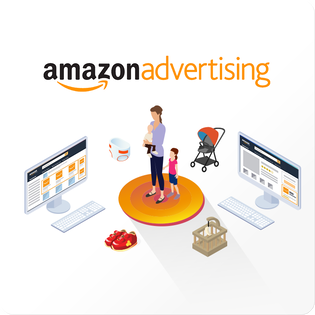 So, how do you get an “Amazon Attribution” link? The following instructions are aimed at use with a PC or laptop. I don’t suggest doing this on a phone or tablet because the screens will look different. I have created a short video (posted after the written instructions) which takes you through the process.. First of all, you need an Amazon Ads account. If you haven’t got one already, then you can create one direct from your KDP account. On your Bookshelf look to the right where it says “action”, click on the three dots. Find “promote and advertise” and click on it. Find “Run an ad campaign” and then locate the button marked “choose” and click on it. You will get a drop down list of all the Amazon marketplaces where you can advertise. If you are running campaigns aimed at different marketplaces and want to track each marketplace individually (recommended), you will need an ad account for each marketplace, though Amazon are planning to merge marketplaces for advertising in the near future, so by the time you read this that information may be out of date. I suggest you start with the country where you are based, or where you sell most of your books. For us that’s Amazon.co.uk but for you it may be somewhere different. Once you have selected your marketplace, you will get a new button displayed which says “Create an ad”. Click on that. You will then be taken through the usual pages needed to create an account if you don’t already have one, before you finally get to the “Ads Dashboard”. There is no need to create an actual Amazon Ad. They cost money. If you want to run Amazon ads that, again, is a whole different blog (which we have already published - look in our archive under “advertising”). On the left of your screen, you will see a vertical column of symbols which allow you to do various things. The only one you are interested in is the one that looks like a tiny bar chart. Click on that. You will get a new menu and you need to click on “Amazon Attribution.” This will open up a page which is headed “Measure Your non-Amazon Marketing Activities.” Below that is a button marked “Create Campaign”. You guessed it, click on that. This gives you two graphics, one of which says “Create manually” and the other doesn’t. Select the “Create manually” graphic by clicking on it and some boxes will appear below.. The first box asks you to name your campaign. Choose this name with care, because once you have created half a dozen of these campaigns you need to be able to tell which is which, eg which is Facebook and which is Google Ads, or whatever. Below that you will get a list of your books displayed. Scroll through the list and click on “add” to add that book to the attribution results. If you are marketing a stand-alone book, you need only select that book. If you are marketing a series, however, a customer may buy book 1 only, but they may buy other books in the series at the same time (whoop-whoop!). Or they may see the post for book 1, which reminds them that they read it and enjoyed it, and they may use that link to then go to your Amazon page and select Book 2 etc. So, for a series you probably want to select all the books in that series (and the box set if there is one). But, as a minimum, always track Book 1 because that is the series starter. If you have ebook, paperback and hardback formats you can select them all, or you may prefer to create an individual link for each format. That is your choice. We include all formats in the same campaign. Next you create your ad group. This basically provides Amazon Ads with all the information it needs to identify the source of the link when it is used, eg so it knows that it is coming from Facebook and not from Google. So, give the ad a unique name so that you can distinguish it later, when you come to analyse the results. In the “publisher” box select the platform you are using (Facebook, X, Google etc) from the drop down list provided. It is an extensive list and covers most social media and advertising platforms and some etail sites that allow links to be redirected to Amazon. You can also type in new publishers (sites) if the one you are using isn’t listed, eg your own website. If the platform you have chosen is social media, there is no deed to complete the next box. If it is something else, then there are other selections you may need to make. The “Click through URL” box is where you paste the link to the Amazon sales page for your book, in the version you wish to track. The quickest way to get to that is to go back to your KDP Bookshelf and click on “”View on Amazon” (make sure you select the version you wish to track) and then copy and paste the URL when you get to the Amazon page. Note: “View on Amazon” allows you to select any marketplace (territory) where the book is sold. So, make sure you select the marketplace you want to track. All you have to do now is look up to the top right hand corner of the page where you will see a button marked “create” and click on it. It takes a few moments for Amazon to create all the magic that is needed, but eventually you will be given a summary of your entry, along with an attribution URL. That URL is very long, but it is the one you then copy and paste into whatever activity you want to monitor. For example, if you want to monitor a Facebook post, you paste it into the Facebook post instead of the link you would normally use. Here's the video demonstration we promised. Using Facebook as an example, if anyone clicks on the link to go to your Amazon page the click will be recorded by Amazon and if they then buy your book the sale or download KENP (KindleUnlimited pages) this will also be recorded. From the name you gave the attribution link, you then know which post got you your sale. You view your results using the same “Amazon Attribution” selection in Amazon Ads, by clicking on the “Ad Groups” option instead of “Campaigns”. You can also track different channels (Facebook, Google etc) by clicking on the “Channels/Publishers” option, and you can access your links on the “Attribution tags” option if you want to copy them again for use in a new post.  When it comes to reviewing the results, Amazon are providing you with a free service, so they don’t rush to collate them. It can take several days for some results to appear. You will start to see your link clicks and KENP (Kindle page reads) the day after you post the link. However, in most cases the sales results may not be visible until around Day 7 or even later, An enhancement of the use of attribution links is if you want to try out different posts on the same platform. For example, if you want to see which images work best for your posts, which text attracts more clicks etc, you can create a unique attribution link for each version and then view your results to decide which is getting you the best results. That means you are working less in the dark and taking a lot of the “error” out of trial and error. So, if you are getting sales on Amazon but have no idea where they are coming from, you now know how to track them using “Amazon Attribution”. If you have enjoyed this blog, or found it informative, then make sure you don’t miss future editions. Just click on the button below to sign up for our newsletter. We’ll even send you a free ebook for doing so. 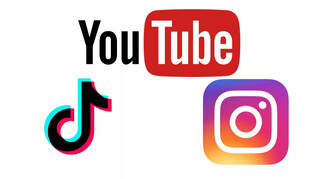 Up until now we haven’t posted much about using YouTube, Instagram and TikTok for book marketing. It isn’t because they aren’t any good for marketing. In fact, just the opposite. Those platforms are as good, if not better, than Facebook or X for selling your books. No, the reason we haven’t posted about them before is that you have to think about how you use them in a different way from other social media. Because of that we’ve been trying out different approaches of our own to see what works – and what doesn’t. Just posting an image of your book cover isn’t going to sell your book on those 3 channels. Not even making a book trailer featuring your book is going to work.  The reason why is that those 3 marketing channels work on the basis of personal interaction. What do we mean by that? After all, it is someone talking on a video. How can anyone interact with that? Well, they interact on a psychological level. The viewer sees the person in the video talking directly to them and to no one else. The video speaks to them personally. Now, there are a number of techniques that the people in the videos use and they vary according to what is being sold. I’ll illustrate what I mean with some examples. 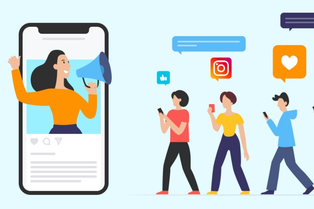 Let’s start with the “influencers”. These people make a lot of money because they sell products on behalf of brands. But they never use the word “sell”, or “buy” or make any other reference to commercial transactions. I’ll use a stereotypical influencer to illustrate: the make-up demonstrator. They open with a line such as “I want to show you this great new lipstick (or whatever) I’ve just discovered.” Of course, their tone of voice is excited. This lipstick is so great they can’t contain their excitement about it. Which gets the viewer excited because excitement is contagious. Straight away the viewer is interested because the influencer is letting them in on their new discovery, not trying to sell them the lipstick (even though they are). They are sharing a secret with them. Those are very intimate acts, and we respond to them at an emotional level. They then demonstrate their use of the lipstick, which makes them look fabulous of course, and the viewers want to look just like the influencer, so they buy the product. The influencer may not even mention where the viewer can buy the product. They’ll show them the brand name, of course, but then they’ll leave it up to the viewer to follow-up because that way they won’t feel pressured into buying. The technique isn’t new. Product demonstrators have been around almost as long as products, but in the past they were standing in front of you rather than appearing in videos on-line.  Next we have the musicians. Their technique is different. They’ll start by saying something like “This is my latest song which I want to share with you.” Again, you are being drawn into an inner circle of intimacy. They then sing a verse and a chorus. If you like the song, you then have to either buy it to hear the rest or add it to a playlist. Either way, the musician sells their music without actually selling it. 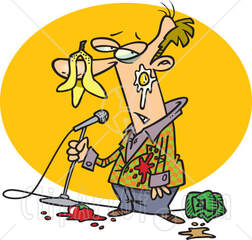 Then we have the comedians. They post video clips of their act. They make you laugh, so when they announce their next gig or their next tour, you want to go along and see them, so you buy tickets. That is more of a delayed reaction, but it means more ticket sales than if they hadn’t posted the clip. So, three different techniques for three different types of product. There are other types, but those serve my purpose in illustrating how the channels are used in different ways.  Now, how do you adapt this to suit your product – a book? With YouTube you can adopt the same technique as a musician and read an extract from your book. You don’t have to show your face if you don’t want to but setting the scene is important; use the camera to act as the viewers' eyes, perhaps finding the book on the arm of a comfy chair and settling down to read it. The voiceover then reads the extract, which you can do yourself It will probably take you a few goes to get the sort of image you want, but it will work. Put an “end board” on the video saying where it can be bought and provide a link in the video’s description along with the blurb and some suitable hashtags. If you use Canva or BookBrush (or similar packages) you can make videos of someone reading an extract. For example, if your book is set at sea you can uses a video of a seascape with you reading the extract as the soundtrack. Then promote the heck out of the video on your other social media.  Instagram and TikTok aren’t so well suited for readings. Their users have short attention spans. Anything longer than a minute probably isn’t going to be watched to the end. And anything that isn’t eye catching isn’t going to be watched at all. The first 5 seconds of the video is crucial to grabbing the viewer’s attention. This is where you have to project your personality as an author. If you try to pitch your book, you won’t sell anything. You have to pitch the idea of books in general and then mention your own books in passing. A popular style in recent months has been “Five books I wish I could discover all over again”. You don’t have to show your face, you just have to show the book covers and maybe your hands flicking through the pages. And, of course, you have to talk about why the books mean so much to you. Then you segue into how those books inspired you to write your own book, a copy of which you also happen to have in camera shot. You can talk about your own books, but you have to put a new twist on it.  People love stories. People love stories. People, especially those that read books, love stories, so use that to your advantage. One of our authors laid out his books on a table then said that not only did the books tell a story, they each had a story of their own, which was how they came to be written. He then made a separate video for each one and told the story of how he had been inspired to write it, into which he wound some of the book’s plot and characters. And it worked. Each video sold copies of the book he was talking about. But he never actually talked about the book in the way he would have in a written blurb. I would recommend going onto TikTok and Instagram and using the hashtags #Booktok and #bookstagram to see what other authors are doing on there. If your favourite authors have TikTok or Instagram accounts, see what sorts of content they post to promote their work. Remember, imitation is the sincerest form of flattery. Identify the sorts of videos that make you feel good about the author and their products, not the ones that are trying to pitch books directly to you. Emulate the former, not the latter.  Unlike X or Facebook, these channels aren’t about how many followers you have. Your videos will be shown to users based on what they like to see, so it doesn’t matter if they follow you or not. If they are using any of the hashtags that relate to books or reading, there’s a good chance your video will be shown to them if you have used related hashtags, including genre hashtags Of course, if they follow you that’s a bonus, because it means they will definitely see your videos in the future. But that isn’t as important as it would be on X or Facebook. Once again we must add a “health warning” that using YouTube, Instagram and TikTok isn’t going to turn you into a best selling author overnight. But they can add additional strings to your marketing bow. Experiment and have fun. You have nothing to lose except for a bit of time. 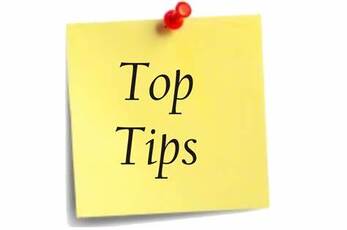 Just a few tips for you. Make sure that any book titles haven’t become reversed during the recording process. I recently watched some TikTok videos by an author I follow and in a couple of them her book titles appeared as “mirror images”. This is a common problem when using the camera in “selfie” mode and holding the book up in front of your face (try it if you don’t believe me). If you have friends who read your books, ask them to do video reviews for you on TikTok or Instagram, making sure they use suitable hashtags, including your author name. Vary your styles and themes. If all the videos you post look the same or sound the same, people will lose interest. 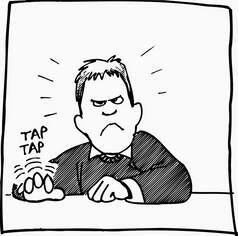 Be patient (yes, that old one again). If you are just starting out on these channels it will take time for people to find you and to share your videos. But they will if you give them long enough. Post as frequently as possible. Yes, it’s a big time commitment to keep on making new videos, but anything worth doing is worth investing the time into doing it. Use "dead time" to make videos, eg when commuting, coffee breaks, lunchtime etc. For those of you who have never used these platforms, here are some links to helpful videos on how to use TikTok. Most of what they say can be applied to YouTube and Instagram too. TikTok Beginner’s Guide https://www.youtube.com/watch?v=rjjjlJw2cgM How to make TikTok Videos https://www.youtube.com/watch?v=vAho-cr5UxY 10 Mistake TikTok users make https://www.youtube.com/watch?v=nrY9HpJd6zE Hashtags https://www.youtube.com/watch?v=xcZHGr_xpII If you have enjoyed this blog, or found it informative, then make sure you don’t miss future editions. Just click on the button below to sign up for our newsletter. We’ll even send you a free ebook for doing so.  I read a post in a writers’ group on Facebook recently that said that the author had done their “research” and come to the conclusion that there were just two approaches to marketing a book. Approach One was to plug your book relentlessly on social media. Approach Two was to make sure you get your keywords right, a good cover, a snappy title and a top notch blurb so that your book would show up in searches and sell that way. The person who made the post had decided he was going to put all his eggs in one basket and just pursue one of those approaches. I’ll not say which in case it influences you to do the same, which is not the objective of this blog. In fact, the objective is exactly the opposite.  Like this shape, Marketing is multifaceted. Like this shape, Marketing is multifaceted. I’m not going to say that either of those two approaches are wrong in themselves. What I will say is that narrowing things down to just one of two approaches is like saying there are only 2 ways to cook eggs (I can think of 6 without breaking sweat). Marketing, like any discipline, is multi-faceted. Tossing a coin and saying that only one option will be taken is like taking a binary view of any activity. It rules out more than it includes and what it rules out is valuable. Good marketing is analogue decision making, not binary. Using social media to plug a book is important to an Indie author. First of all, it is all some authors can afford because everyone can afford free. Secondly it raises the author’s profile, even if it is only amongst a limited size group of people. Finally, it can actually sell books if done the right way. But having the right keywords, cover, blurb etc is also essential. Keywords get the book found in searches. But they don’t sell the book. Once the book has been found, the cover attracts attention, the blurb increases the reader’s curiosity, and the sale is around 70% made.  But it is either the reviews or the free sample (sometimes both) that actually sells the book. Reviews because people will buy what other people have liked and the free sample because it allows the reader to decide if the book lives up to the expectations raised by the blurb and the cover. But that assumes that the book appears high enough up in the search results. There can be no doubt that Amazon ranks search results by popularity. At the top of Page 1 of the results is always the “sponsored” books, the ones that authors or publishers have paid to be there. Then you usually get the best-sellers in the genre because Amazon knows that they are money makers. The rest of the results can be spread over many pages and there is no way of knowing how far readers will go through the results before they buy their next read. Yes, your book will be there if you used the right keywords, but they may be on page 100. 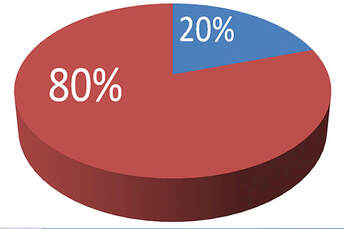 I suspect it’s going to be one of those 80:20 things. 80% of all books that will be purchased will appear on the first 2 or 3 pages of results and only the remaining 20% of sales will be made on subsequent pages of results, with the percentage declining the further you go through the pages. I have no evidence to support that, BTW, but intuitively it would seem to make sense. So, if you want to be in that 80% you have to do something else to make that happen. And that falls outside the second approach described above. To get your book into the 80% you have to find some way of marketing the book that doesn’t depend just on search results. You have to find a way of getting the reader to go looking for that book specifically, rather than doing a search. And that means finding a way of getting the reader to click on a link so that they go to exactly the right page for the book.  So, we’re back to social media. Yes and no. Social media is just one route that can be taken. We’ve already mentioned paid advertising as a way for readers to find a book the reader didn’t even know they wanted to buy. We use it and it pays for itself many times over. But for people who have a more limited budget that isn’t always a viable route to take (but check it out because it’s probably cheaper than you think). When you use social media and search results together, you start to harness the best of both worlds. It isn’t an either/or situation. It is a “both in the right place” situation. Then you can add in things such as email lists, promos, blogs and so much more.  I could list all the approaches that we at Selfishgenie Publishing use, but you would end up reading all day and you probably aren’t up for that. Scroll down to read the blog we posted a fortnight ago, because that says a bit more about what successful book marketing involves. Suffice to say – there is more than one way to skin a cat and using several ways, at the right time and in the right way, is always going to produce better results than just limiting yourself to one approach (apologies to animal lovers, but it’s just a saying. No animals were harmed in the writing of this blog). That is why marketing is such a time consuming activity for the Indie author and if you aren’t prepared to commit the time, you are always going to get disappointing levels of sales. One of the most frequent questions Indie authors ask about marketing their books is “Which is the best place to market my book?” The answer to that is so subjective that there simply is no answer. 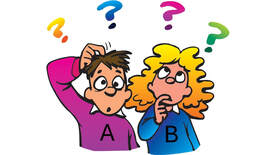 Just because Author A had huge success using Platform X, it doesn’t mean that Author B will have the same success if they also use it. This is why you have to know your readers, especially when it comes to using social media. For example, TikTok is used a lot by younger people. Now, don’t get the idea that it is only used by them, because older people use to too. But if you want to reach younger readers, then you are better off using TikTok than using, say, Facebook. Many women find X (formerly Twitter) too hostile for them, so if you want to reach a female audience you would be better off using Instagram or perhaps Pinterest, where more women tend to hang out. And that is why Author A may be having more success and why Author B won’t because their readership is different and therefore their readers’ social media habits are different.  There are even some readers who don’t use social media at all, or the internet for that matter (I know, weird, huh?) so reaching that group of people is going to be really hard, which is where book fairs and other real world forums fit into the equation. I’m not saying you have to be everywhere, all the time. You would have to be superhuman to do that. But you do have to think in terms of being in more than one place at any time. This is why real research is so important. You have to know where the majority of your target readership hangs out and when they hang out there, so that you can be in the same place at the same time. For example, there is little point in targeting YA audiences between 9 in the morning and 4 in the afternoon, because they will be in school or college. You have to target them in the evening. So, what would we like you to take away from this blog? 1. Book marketing is not a binary choice. It is multifaceted. 2. Taking multiple approaches to marketing covers more bases, which means it is likely that you will sell more books. 3. Know where (and when) to find your readers, so your readers can find you. If you have enjoyed this blog, or found it informative, then make sure you don’t miss future editions. Just click on the button below to sign up for our newsletter. We’ll even send you a free ebook for doing so. 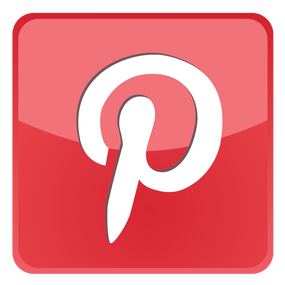 87% of Pinterest users have bought a product because they saw it on Pinterest. Has that grabbed your Attention? It should, because that is 87% of around 300 million monthly users. We here at Selfishgenie Publishing had heard of Pinterest, of course, but we hadn’t paid it much attention. It didn’t seem to have a place in our marketing strategy, as far as we could see. We regarded it as a poor relation of the social media world and therefore not able to do much for us. Then we watched a video that changed our minds. The video was made by a well-known self-published and mainstream published author, Melissa Bourbon, who also provides a wide range of training for writers. She also does a lot of her own marketing and is a big user of Pinterest. In the video she showed us what Pinterest had done for her and we were sufficiently impressed to give it a try for ourselves. So, we gave it a try and it worked for us too, which is why we are now suggesting it for you. What follows is a bit about how Pinterest can be used for marketing, along with some hints and tips we’ve picked up along the way that will help new users to make an impact with it. Let’s continue with a few more significant statistics.  47% of Pinterest users go on the site specifically to shop. So, if you want to find buyers, Pinterest seems to be the place. 50% of Pinterest users are outside of the USA. So, wherever you are in the world, you have a Pinterest audience waiting for you. Finally, just to whet your appetite a little more, Pinterest users are more likely than other social media users to click-through, share or use your content. First of all, what is Pinterest? We thought it was just another social media platform. We were wrong.  Social media posts are here today, gone tomorrow things. Every time you make a post, older posts get pushed further and further down your profile page. That means you have to keep refreshing your messages with new posts. With Pinterest you don’t have to. Pinterest “pins”, as they are called, show up in search results according to relevance, not currency. So a pin made 5 years ago can show up alongside a pin made today. Pinterest is really a very powerful search engine. But unlike other search engines, it only searches within its own site. When users log into Pinterest they are usually looking for something and Pinterest helps them to find it. One of the popular searches is for recipes, for example. Readers enter a few ingredients or other suitable search terms (dinner recipes, summer recipes, etc) into the search bar and Pinterest will show them all the pins related to those search terms. But not only do your pins show up on Pinterest searches but, if you set them up correctly (I’ll return to that later in the blog) they’ll also show up on Google searches. Two for the price of one. Actually, two for the price of none because you don’t have to pay Pinterest anything, unless you want to use their advertising tools.  And the same applies to books. Some readers go to Pinterest to find ideas for new books to read. If you have a website, Pinterest can give you immediate impact. Google takes a long time to find new websites and show them in their results, no matter what SEO “gurus” might tell you. They can take weeks, months or even years to make it to the first or second pages of search results. But pins on Pinterest show up the day they are posted. All users have the latest pins displayed on their home feed, before they even start searching. And the pins they are shown are those relevant to the sorts of things they have saved before. So, if they have saved pins related to books, they’ll see new pins related to books – your pins. Why do buyers like Pinterest and not Amazon or one of the other book etailing sites? Probably because there is no pressure to buy. They are just browsing, looking for ideas or suggestions. 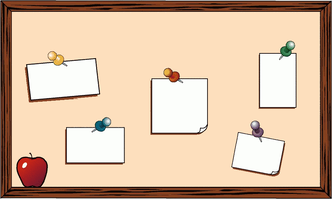 If the reader finds something they like the look of, they can click on the pin to find out more, but if they aren’t interested they can just go onto the next pin that takes their fancy. Unlike other social media sites, Pinterest actually encourages users to click on links, by including those links in prominent positions on the details page of the pin. And this is why it is a marketing tool for indie authors. Now, I’m not claiming that Pinterest is going to turn a book into a bestseller overnight. Nor would Melissa Bourbon make that claim. This is just one more string to the indie author’s marketing bow and should be viewed in the same light. But it’s probably a more powerful marketing tool than either Facebook or Twitter/X. We started using Pinterest back in November, when we were setting up our social media marketing for the Christmas season. It’s a big time for book sales and we wanted some of that action. The timing of our “discovery” of Pinterest couldn’t have been better. 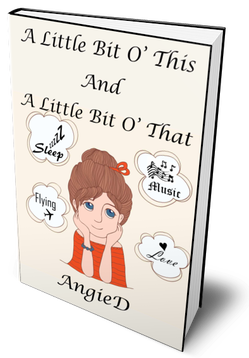 We have two books which we think are especially suitable for Christmas and we put up several pins relating to them. And we got sales. What is particularly significant is that for one of the books, sales had been pretty poor over the first 10 months of the year, but as soon as we put it on Pinterest, that changed. Coincidence? You know we don’t believe in those. Besides, Pinterest’s tracking data showed us how many views and clicks we got for the pins, so we can be pretty sure that the sales came via Pinterest and not just from random searches on Amazon. I’ll be frank, there is some work needed to get the best out of Pinterest, just as there is for any other marketing channel. Experts suggest you have to make around 10 pins a day. Well, we haven’t got time for that so we’re not going to make the same suggestion. But using it regularly is going to have better results than using it sporadically.  In one of the videos we link to later in the blog, the presenter suggests that you can get great returns not by pinning quantity, but by pinning quality. She claims that over 50% of the traffic that is driven to her website by Pinterest comes from just 3 pins, which she made a while ago. But they are “quality” in terms of what makes a good pin, which is why they keep on working for her in the long long term. We’re not going to take you line by line through how to set up a Pinterest pin or how to create a good quality pin. Instead, we went on YouTube and found a video that does that. We provide a link to it at the end of the blog. But we have learnt a few tricks, and we’d like to offer you a few tips. 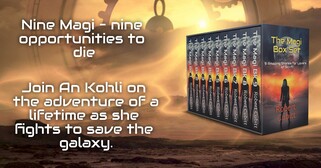 The first tip we have is to make sure your book’s cover is eye catching. Your cover image is going to appear as one of many, so it has to stand out. If it isn’t eye catching, put it onto a background that is eye catching. Graphics packages such as BookBrush and Canva have tools that allow you to do that. It does no harm to surround the cover image with short text phrases, to entice the reader in. We’ve put one of ours here to show what we mean. Pinterest also allows you to overlay text onto your images. Second tip: Make sure the filename for your cover image actually describes the image. Many graphics packages download images with filenames that are just bunches of numbers and letters and authors often don’t rename the files. But if you rename them so that it describes the image, the description acts as keywords, so they show up in search results. For example, we use the format “Author Name_Book Title_Genre_Book” Not only will those words be found by searches on Pinterest, but Google will find them too if someone does an image search using any of those terms. I always include the word “book” in all relevant file names, because that will show up in all searches where “book” is used as a search term, even if none of the other words are used. 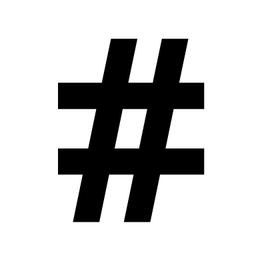 Third tip: Use the right tags for your books. Pinterest doesn’t allow you to create your own tags for your books, but it has lists of tags that have been used in a lot of searches. If you start to type a word into the tags bar, you will get a box that contains all the tags related to that word. Scroll down and select the tag you want and click on it and it will be added to your pin. It guarantees that your pin will be found if that tag is used in a search. Use as many tags as you can – but make sure they are relevant. Your book showing up in a search related to pea soup is not going to win you any friends or sell you any books (unless you write recipe books, of course). 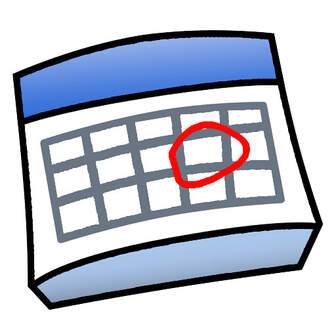 Fourth tip, post regularly and vary your post images and text. As we have said in previous blogs, it can take up to seven viewings of a product before some people will buy it, but at the same time Pinterest has rules about posting spam, so if the images and text are always the same you could get into trouble. This is where packages such as Canva and BookBrush come in handy because they have lots of templates you can use to create different images with different text, all of which will have your book cover at the forefront. Fifth Tip, make sure you are using the right keywords in your pins. Like any other search engine, Pinterest looks for pins that contain the words that users input into the search bar. So, you have to use the same keywords. You can also nudge the search in the right direction by including hastags in the pin’s description (but put them after the main text). Do your research by entering the keywords you think are right to see what sort of results you get. Refine them until you are getting results that display books just like yours. Those are then the keywords you need to use in your pins to get your books found.  Finally, don’t forget to make special pins for special events: Christmas, Valentines Day, Halloween, Black Friday, Cyber Monday etc. These are great times to boost your sales, especially of paperbacks, and special pins will attract people who are looking for anything related to those occasions. So, that is our quick whizz around Pinterest, and we hope you have the same success with it as we have. But remember, this is just one string for your marketing bow. A well rounded marketing strategy uses all available and relevant channels and also uses them in multiple different ways. If you want to give Pinterest a try, then beginners can watch this video Once you are happy with using the platform, you might want to take a look at this video, which is aimed at optimising pins for business use. If you have enjoyed this blog, or found it informative, then make sure you don’t miss future editions. Just click on the button below to sign up for our newsletter. We’ll even send you a free ebook for doing so.  Back in June of this year we blogged about the way some authors don’t engage properly on social media, so they don’t get the best results out of it. We called it “fake engagement” and there is a lot of it about. We are happy to say we now have a case study we can use to demonstrate the value of good quality social media engagement, so we can show how it is superior to fake engagement.  It is the basic principle of social media marketing that selling should always be secondary to engagement. If people think that all you want to do is sell them something, they will scroll past your posts. That means you spend a lot of time and effort trying to market on social media, only to get poor results. So, to our case study. A reader of our blog about fake engagement, we’ll call them Red Bus, got in contact with us to say they make regular posts to their account on X (formerly Twitter) related to the themes of their books. They are just statements of fact that Red Bus thinks readers may find interesting. The posts don’t have URLs linking them to Red Bus’s books, because that wouldn’t be engagement, that would be selling. 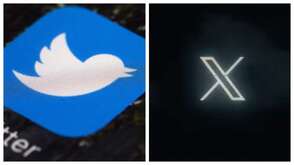 This week Red Bus got a response to one of the posts from someone we will call Maple Leaf. Red Bus responded back and a virtual conversation started up, with Maple Leaf talking about their dad’s experiences and Red Bus making contributions based on personal experience. This went on for about two hours, off and on (maybe a dozen posts each) when Red Bus had to end the conversation, as there were other things that needed doing and X is too much of a distraction. Red Bus said goodbye and thanked Maple Leaf for the chat, logged off X and thought no more about it. 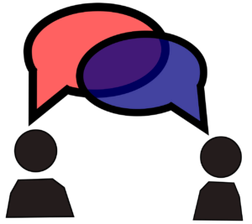 Red Bus logged back onto X the next day and found that Maple Leaf hadn’t quite terminated the conversation the previous day. Maple Leaf had asked a couple of questions about Red Bus’s books, relating to where they were available. Naturally, Red Bus replied, providing the necessary information. But Red Bus didn’t include a link to the books. That would be too pushy, Red Bus decided. Again, Red Bus didn’t think too much more about it and got on with the business of the day. Later that day Red Bus logged onto their KDP dashboard, to see that there had been a sale in the territory where Maple Leaf lived. A coincidence? Maybe. But Red Bus didn’t think so. Logging back onto X, Red Bus saw a notification from Maple Leaf, and sure enough, Maple Leaf said they had purchased one of Red Bus’s books. So, quality engagement on social media had led directly to a sale. At no point did Red Bus link to any of the places their book is sold. At no time did Red Bus suggest to Maple Leaf that Maple Leaf might like Red Bus’s books.  Maple Leaf took the decision to ask, and then took the decision to buy, without any prompting. Now, you may think that a single sale is no big deal, and you would be right – and wrong. Firstly, if Maple Leaf likes Red Bus’s book, they may buy the other books that Red Bus has written, so one sale turns into several. Secondly, if Maple Leaf likes the book(s), they may leave a review and we all know how valuable reviews are. But, most importantly, Maple Leaf may tell their family and friends about the new author they discovered on X, and suggest that the family and friends take a look for themselves. 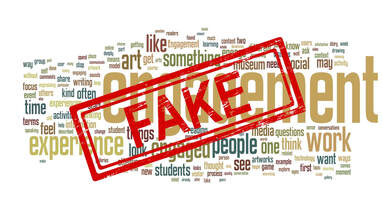 Because Maple Leaf has had a positive experience as a result of this engagement and that is so rare it may be worth mentioning to others. That is the sort of result you can get from proper engagement. It is not the sort of result you will get with posts saying “Can anyone see my posts?” It is not the sort of result you will get with posts like “Who is the best band in the world?” Or with “Should you put pineapple on pizza?” And it is certainly not the result you will get just by posting links to your books. Growing a market through social media is a painfully slow process sometimes. But if you do it right, it can pay off, as Red Bus found out this week. If you have enjoyed this blog, or found it informative, then make sure you don’t miss future editions. Just click on the button below to sign up for our newsletter. We’ll even send you a free ebook for doing so.  As publishers we belong to several writing groups on social media (not always under the “Selfishgenie” branding). They help us to keep in touch with authors, see what sorts of issues are bothering writers and which we might also need to be bothered about (AI is a hot topic right now), and to offer advice to writers who are struggling to understand the complex world of writing and publishing and how the two connect up. We believe that by helping authors we also help ourselves because we get better quality books submitted. It also helps to improve the quality of work being produced by indie authors and small publishers, so we can all compete better with the big boys (or girls) with the fancy offices. So, everyone benefits, and nobody suffers, except maybe the big boys (or girls) in the fancy office blocks.  But there is an annoying habit some people have on social media, which is to ask a question and then argue with the answer. This is a generic thing on social media, of course, but when it happens in writing groups where people are supposed to be supporting each other, it is contrary to the spirit of providing support. Now, we’re not talking about arguing with facts. If facts are wrong then they have to be corrected because, otherwise, misinformation gets circulated around and that helps no one. No, we’re talking about arguing with opinions. Let’s start with the basics. 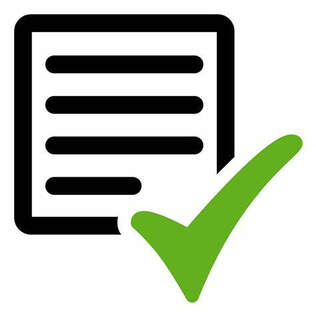 Social media does not exist to validate anyone. If you post something on social media expecting universal approval, you will be disappointed. If all you want or expect is validation, you are in the wrong place. Secondly, if you post a question on social media, you will get answers with which you agree and answers with which you disagree. The sorts of posts I’m talking about are cover images, extracts from stories, drafts of blurbs and synopses and perhaps the odd idea for a story and the author wants to know if it’s likely to find readers. But there are plenty of other sorts of questions, such as the viability of self-publishing, How and where to self publish, the best way to market books, author’s experiences of dealing with certain companies and so on. In fact, if you can think of a question even remotely related to writing or publishing, someone will have asked it or will ask it in the future. That’s all great. Social media is a great place to post stuff or ask questions if you want feedback, advice or information. BUT 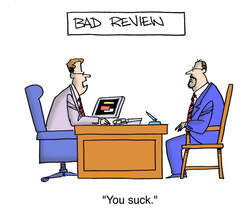 Not all the feedback will be what you want to hear. Just because someone thinks that a story idea is brilliant and the greatest idea since Harry Potter, it doesn’t mean anybody else will think the same. To coin an old phrase, just because you think something is a good idea, it doesn’t mean it is. The “remainder bins” are full of books that authors (and some publishers) thought were good ideas and it turned out that readers didn’t agree with them. There are other aspects to this, which come down to good manners.  Firstly, someone has taken the time to read the question, study whatever it was that was posted, thought about their opinion and posted it. That, at least, deserves a thank you, not an argument. Secondly, it is an opinion. Nobody has to agree with it but, equally, arguing about it serves no purpose. They won’t change their mind. Yes, you may have slaved for hours drafting what you think is the perfect blurb and posted it on social media only for someone to say “No, mate. I wouldn’t buy your book based on that blurb.” Yes, that is very disappointing. Yes, it may be discouraging. But that opinion may be important.  If someone has said that, then others may be thinking it. And if people are thinking it, then the chances are that whoever made the statement is right and the blurb won’t sell any books (ditto covers, sample chapters etc). The correct response to that is not “You don’t know what you are talking about.” or words to that effect. The correct response is “Thank you for your input..” What I’m trying to say is, if you don’t want to know the answer, don’t ask the question. 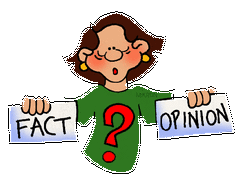 If you post your book cover and say “Here it is, the cover of my latest book.” Then you can disagree with people who say they don’t like it, because you haven’t actually invited their opinion. But if they’ve expressed an opinion they still won’t change their mind so there isn’t much point in arguing with them anyway. But if you post your latest book cover and say “What do you think of this?” then it’s open season for opinions. It’s possible that not everyone will think it’s as good as you think it is, and some people will tell you that (probably us), because you asked them what they thought of it. If you get defensive and challenge their view, you are alienating that person and they might be one of the people who would have bought your book – but they won’t now. Or, worse, they may buy it, review it and say what an awful cover it had. Yes, people really do that.  And, ultimately, they may actually be right, and it is better to find that out before you publish your book than afterwards. All input is valuable, especially from the people who actually read books. So, with this in mind, we have brainstormed a list of do’s and don’ts when posting about your books on social media (they are opinions, so feel free to disagree with them or to suggest others). 1. If you don’t want opinions, don’t ask a question. Better still, don’t post on social media. 2. If you haven’t asked a question, then by all means get into an argument, but bear in mind that it may damage your reputation and sales. 3. If you ask for opinions, bear in mind that some of the opinions you get may not be what you want to hear. That doesn't make them wrong. 4. If you disagree with an opinion, don’t argue with it, just ignore it. 5. You are not perfect, and you probably aren’t the world’s greatest author. But you could be if you listen to advice from other authors. 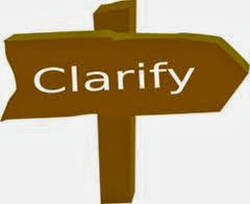 There is one question that you can ask with regard to someone’s opinion and that is “why?”. The reason they think the way they do could be important and could provide you with valuable information, which can inform any changes you may decide to make. However, you have to ask the question the right way. “What do you mean?” is very blunt and sounds defensive. It doesn’t encourage an answer. Or if it gets an answer it might be “I mean what I mean!” which isn’t very helpful. So, here’s a form of words which encourages people to elaborate on their opinion and provide the sort of information you might need (feel free to copy and paste into your social media). “Thanks. If you don’t mind me asking, what is it about (whatever) that makes you feel that way?” When (if) they reply, you may ask other questions to clarify, but make sure whatever you ask doesn’t challenge their view, even if you disagree with it. If you do disagree, you can still ignore the reply, or you can limit your response to “Thanks for your input”. In fact, you should say thank you regardless of what you think of the answer.  There is a subset of the issues I have explored above and that is when people who didn’t ask the question argue with people who have expressed opinions. For some reason these people think they have to leap to the defence of the person who made the original post. They don't. To coin a phrase - not your circus, not your monkeys! Or perhaps they think their opinion is more valid than the one that has been expressed. I have news for them. Their opinion is not more valid, unless they can prove they are an expert on the subject under discussion. All of the above guidance applies to that too. You may not share their opinions, but that doesn’t make you right and them wrong. And vice-versa. If you want to get into an argument based purely on opinions, there is plenty of scope for that in the political groups. In writers’ groups we are supposed to be supportive, not divisive. Belonging to a writer’s group on social media can be highly beneficial to an author. There is plenty to be gained by sharing knowledge and information. But they are also places where it is easy to alienate potential customers, because writers are also readers. So being diplomatic in the use of language is extremely important. And for those of you (us) who give our opinions, whether invited or not, be diplomatic in the way you express yourselves because if you want to be treated with good manners, you must first practice good manners. If you don’t like something, give a well-constructed reason why because that will be more helpful than just saying “I don’t like it”. If possible, provide examples of good practice, or point people in the direction where they can get more help, If you have enjoyed this blog, or found it informative, then make sure you don’t miss future editions. Just click on the button below to sign up for our newsletter. We’ll even send you a free ebook for doing so. 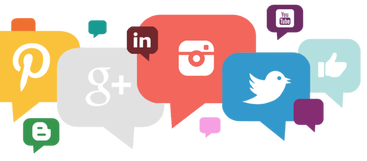 Once again I owe the inspiration for this blog to social media, which is ironic because it relates to the effectiveness of social media as a marketing tool. In this case, I read a Tweet from an author listing all the social media channels to which he subscribed, plus his blog, and bemoaning the fact that they weren’t generating much in the way of sales. I took a quick look at his Twitter feed and spotted at once what the problem was: a lack of engagement. 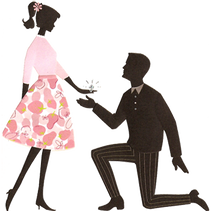 No, not that sort of engagement! No, not that sort of engagement! He had made a few re-tweets and posted a few “fake engagement” type posts (I’ll be returning to that shortly), but there was nothing on his feed that would encourage me, as a reader, to check out his work. So, it was unsurprising that despite all the channels he was trying to use, he was getting little return. Many authors see social media as a way of plugging their books and no more. That is where they go wrong. Yes, you may generate a few sales by metaphorically saying “Buy my book”, but it is just as likely that readers will scroll past and read a Tweet that isn’t trying to sell them something.  Even if they are interested in the book, they have to click away from the social media channel to check it out, and that interrupts their social media experience, so the best that can be hoped for is that they check it out later. That rarely happens because, by that time, the post has been lost amongst the thousands of others that have since appeared on the timeline. But if social media is so poor when it comes to selling books, why do so many social media gurus still champion it? Because social media is a useful tool – but you have to use it the right way. All tools have to be used correctly if they are to provide you with the right results and social media is no different in that respect.  I’ll be using Twitter as my demonstration model, but the same problems apply with most social media channels. So, what do people do wrong? The most common mistake is “fake engagement”. This produces them lots of nice engagement data but doesn’t produce the desired results. In other words, it looks like it is working if you check the number of responses that a post got, but it doesn’t actually sell any books. So, what is “fake engagement”? Well, let’s start with what I mean by engagement. Engagement is supposed to be a conversation, which builds up a relationship, which then leads on to curiosity about the author’s work. 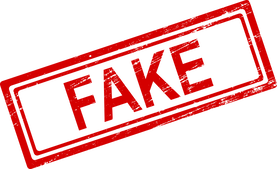 If the approach used generates responses but without that conversation emerging, then it is fake engagement, because it is one sided. It comes in many forms, but these are the most common: “Can anyone see my Tweets?” There are variations on that question, but the basic idea is that the viewer responds with a “yes, I can” answer, which appears in the Twitter analytics as engagement. But it is one sided engagement as no conversation emerges from it. 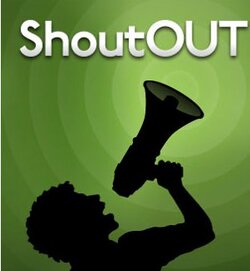 The “Writer’s boost” or “author boost”. This is the one I hate the most, because it uses the desperation of other authors to create the fake engagement. I don’t know of any author who has ever made a sale through responding to that sort of invitation (please comment below if you have). It comes in many forms, including posting links to books or blogs or posting cover images. A variation is asking authors to post the first line of their book or from a chapter, or to say something about a character. The inference is that the curiosity of readers will be excited and they will want to know more, but as the post is appealing to authors, not readers, there is little likelihood of that happening. (yes, I know authors are readers too, but in this instance they are responding as authors, not looking for their next new read). These types of post generate a lot of responses from authors, often several hundred but, again, it doesn’t create actual engagement. There are variations on this approach, such as asking people to recommend books. It usually starts with the poster suggesting they suddenly have some spare cash to spend and they want to spend it on books. 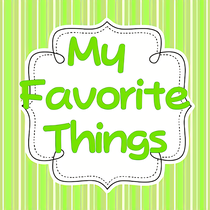 “Who/what is your favourite ….?” There is a natural impulse to respond to those sorts of Tweets, but I would advise against it. In its most harmless form, answering the question is just another form of fake engagement. However, it can also be a form of data gathering. Don’t be surprised if you see a sudden surge in advertising on your timeline related to products associated (however tangentially) with your answer. Some dialogues do emerge from those sorts of questions, but they tend to be between other responders, not with the person who asked the question in the first place. That data also appears in their engagement statistics. The questions take many forms. Another variation is “What goes on first, the peanut butter or the jelly?”, or “What goes with peanut butter (you can’t say jelly)?” The British version of that is “Jam or cream?” (Brits will know what that is about) but it’s still fake.  “I’m having a bad day.” Yes, I know that there are sometimes people on social media who are genuinely having a bad day. But that only makes this sort of fake engagement worse, because it is the very worst form of manipulation. They may look like they are saying “Feel sorry for me; sympathise with me; send me pictures of kittens or puppies”, but all of these are fake engagement. It boosts their engagement numbers and makes their feed look popular, but they don’t actually engage with anyone. And without that engagement, they will never sell any books. And they certainly won’t buy any of your books if you respond. 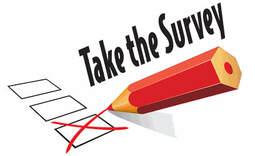 Surveys If you want to boost your engagement stats, post a survey. People love them. But they aren’t real engagement. I could keep adding to this list, but I’m sure you get the idea by now that fake engagement is about getting people to respond to a post, not about actually taking an interest in anything the responders have to say. So, what is real engagement and how do you use it to sell books?  Find the real readers. Find the real readers. First of all, you have to search out and engage with readers, not with other authors. If you are an author, you are trying to attract new readers. That means talking to readers about books.. If you are a sci-fi author, you need to talk to sci-fi readers. If you are a romance author, you need to talk to romance readers, etc etc. How does that sell books? It doesn’t. At least, not directly. Social media isn’t a “direct” sales channel. You can’t draw a line between a post and a purchase. 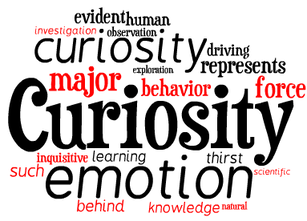 Social media has to be used to excite people’s curiosity about you and the way you do that is the same as you would in real life. You don’t walk up to someone in the street and say “buy my book”. So why would you think you can do that on Twitter, or Facebook, or Instagram? No, you engage people in conversation and the best form of conversation to engage them in is the thing they like to talk about the most – themselves. And, eventually, they feel obliged to ask “what about you?” At that point it is OK to mention your book – because they asked.  BTW, this is where a pinned post about your book is essential. Because they may not ask about you or your book, but they may go and take a closer look at your feed and that’s where they will see the post about your book, if you have pinned it. You still may not make a sale, but you may at least have captured their interest enough to take a look at your book. It is very much a “soft sell” approach, but it is more likely to be successful on social media than a hard sell. How do you identify readers?  It isn’t easy, unless they have it in their biography or they mention it in their posts, but if you assume that everyone is a reader, then you won’t go far wrong. The worst that can happen is that you use social media for what it is meant to be used – for being sociable. Does that all sound like hard work? OK, who told you that it would be easy? Because if anyone did, they lied to you. As I have said in many previous blogs, there is nothing easy about marketing, and that includes social media marketing. Using social media as a tool to promote your work is hard and requires a lot of time and effort. But, done right, it can be effective. Done wrong and it gets you nothing, as the person who inspired this blog found out. If you have enjoyed this blog, or found it informative, then make sure you don’t miss future editions. Just click on the button below to sign up for our newsletter. We’ll even send you a free ebook for doing so. |
AuthorThis blog is compiled and curated by the Selfishgenie publishing team. Archives
June 2025
|

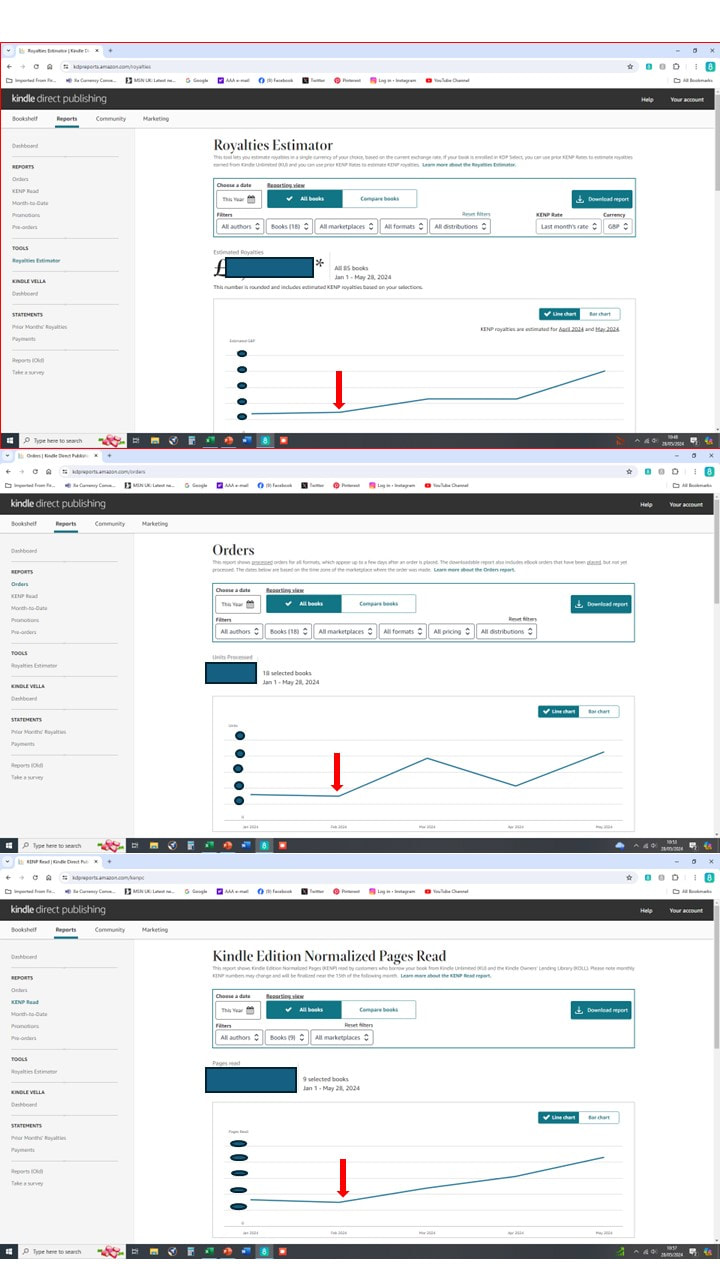
 RSS Feed
RSS Feed